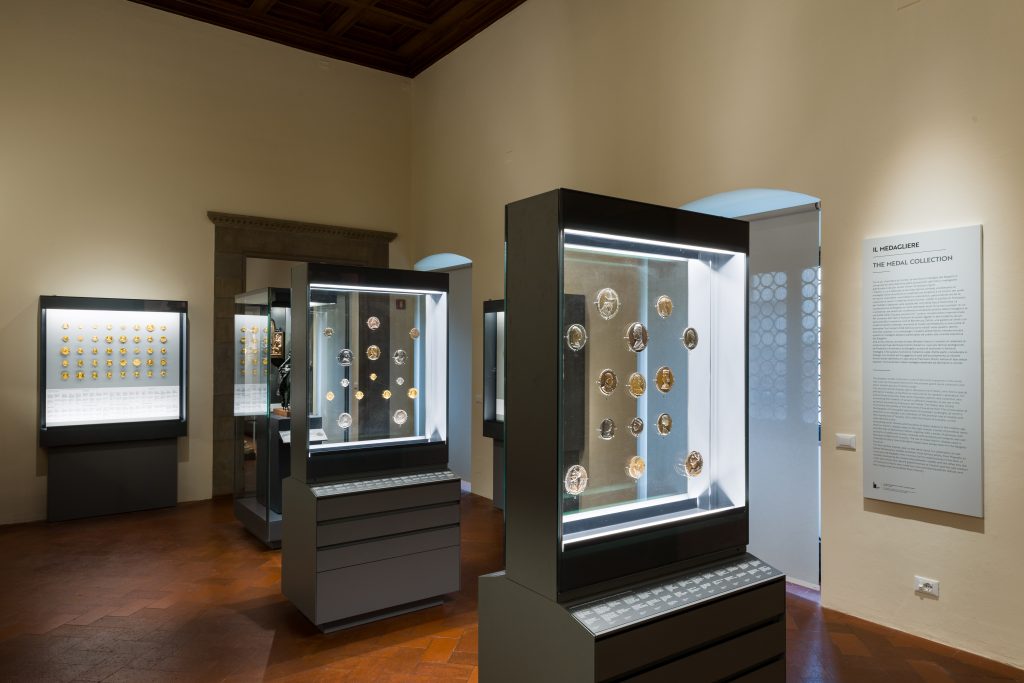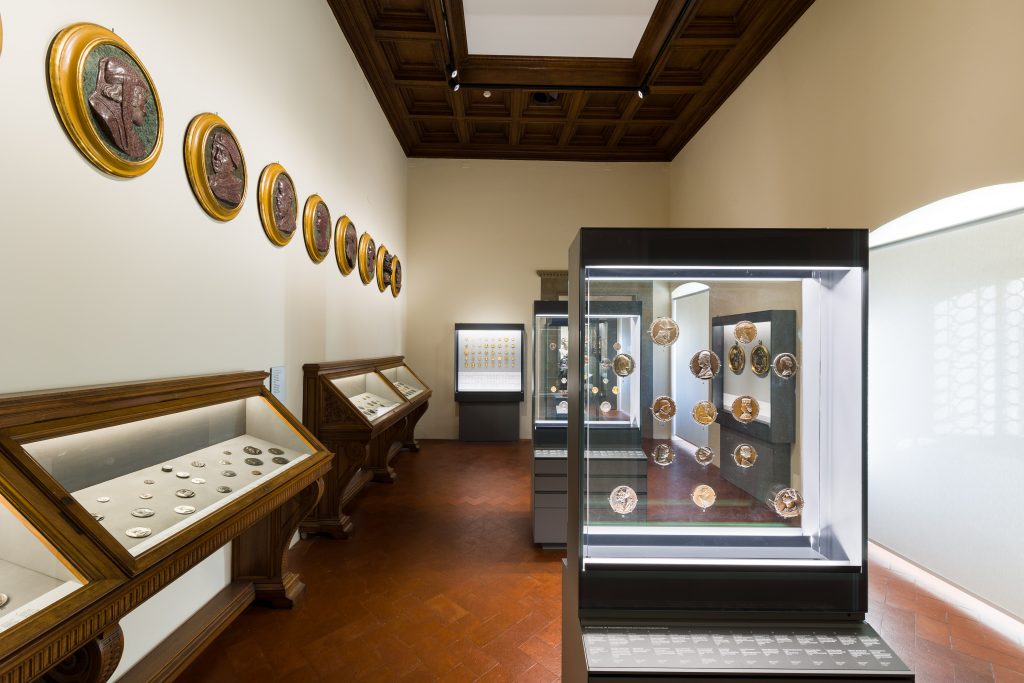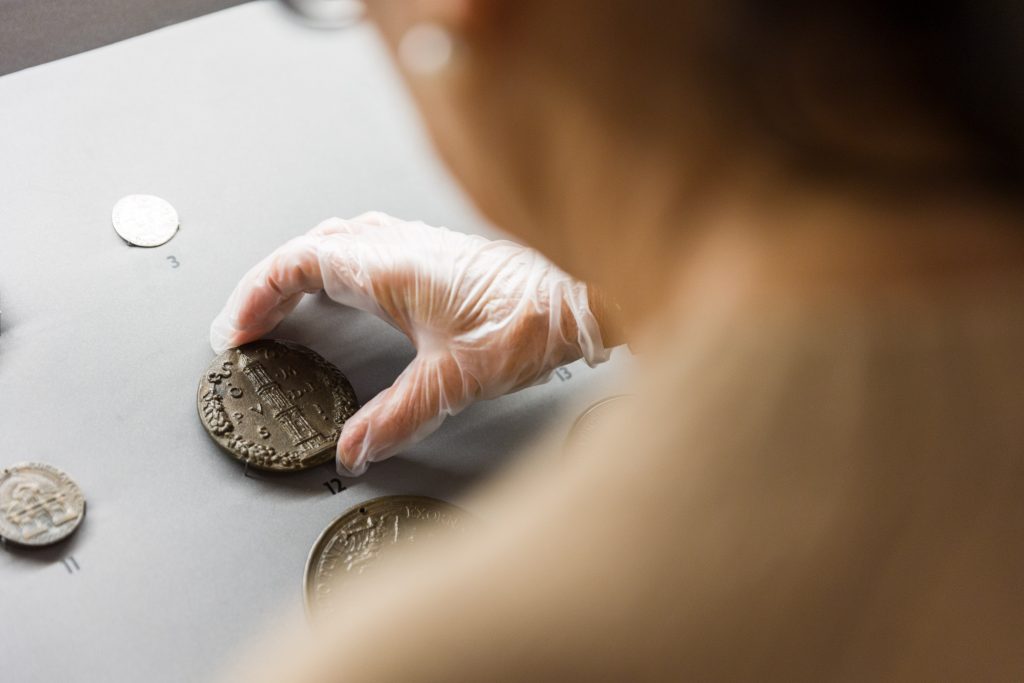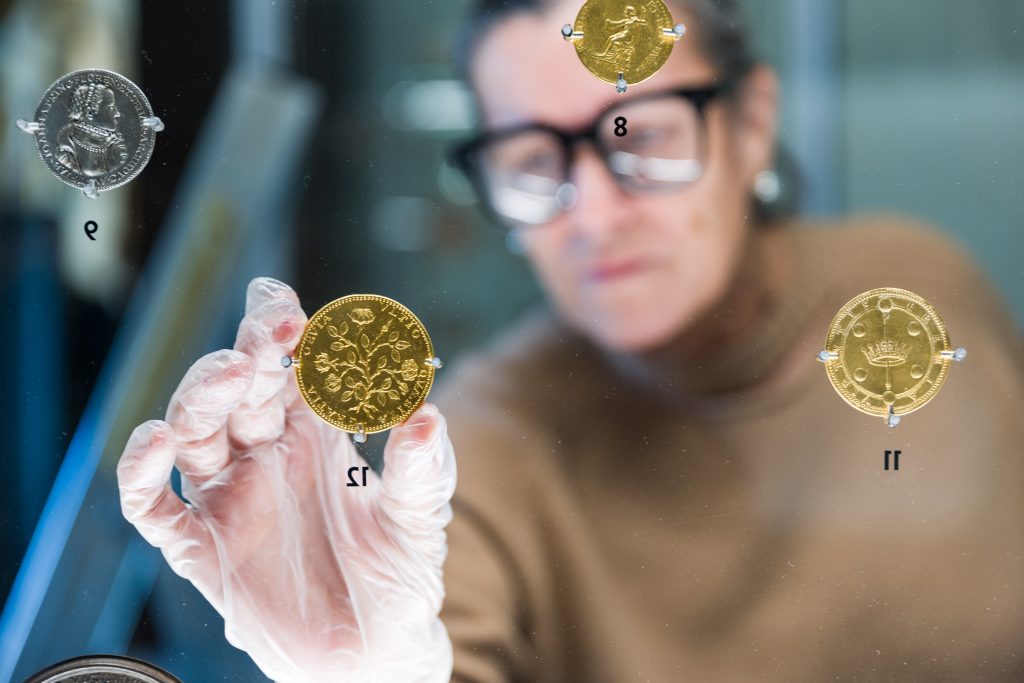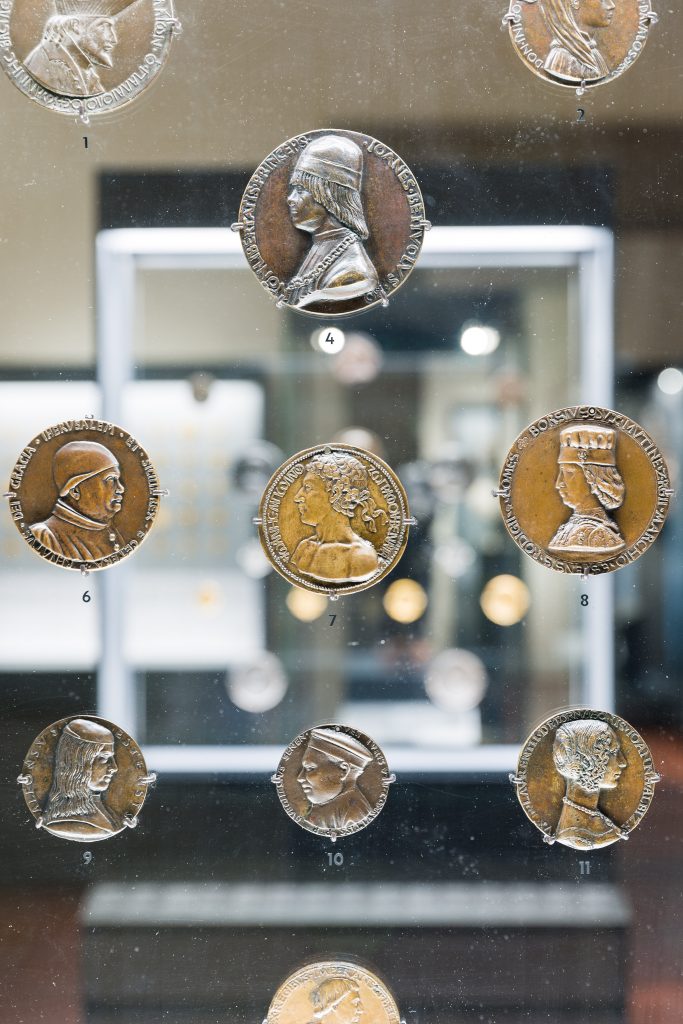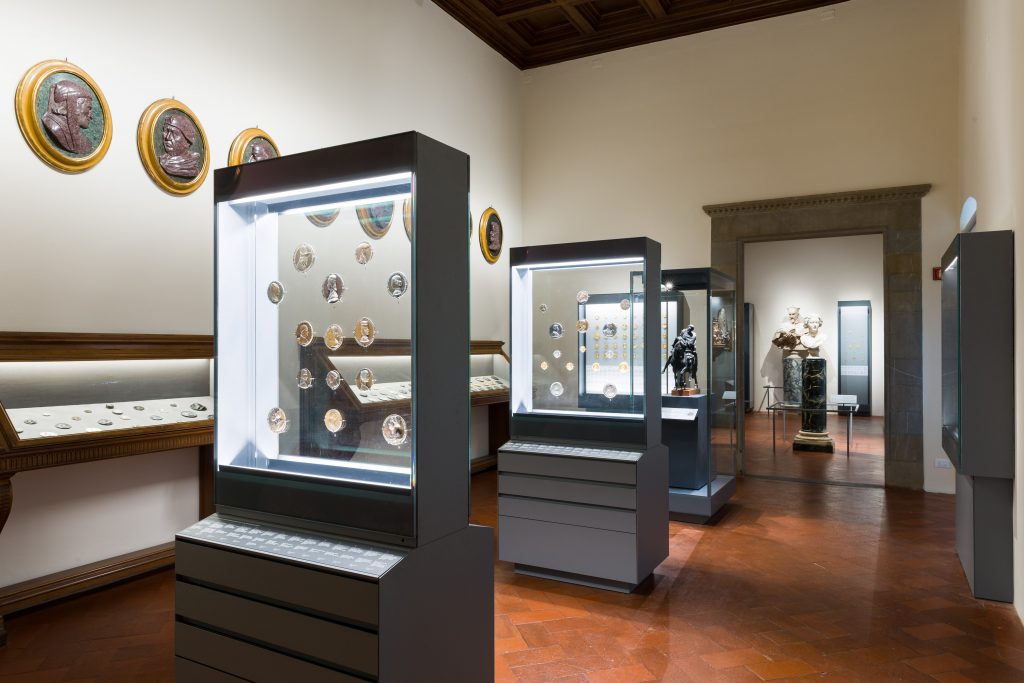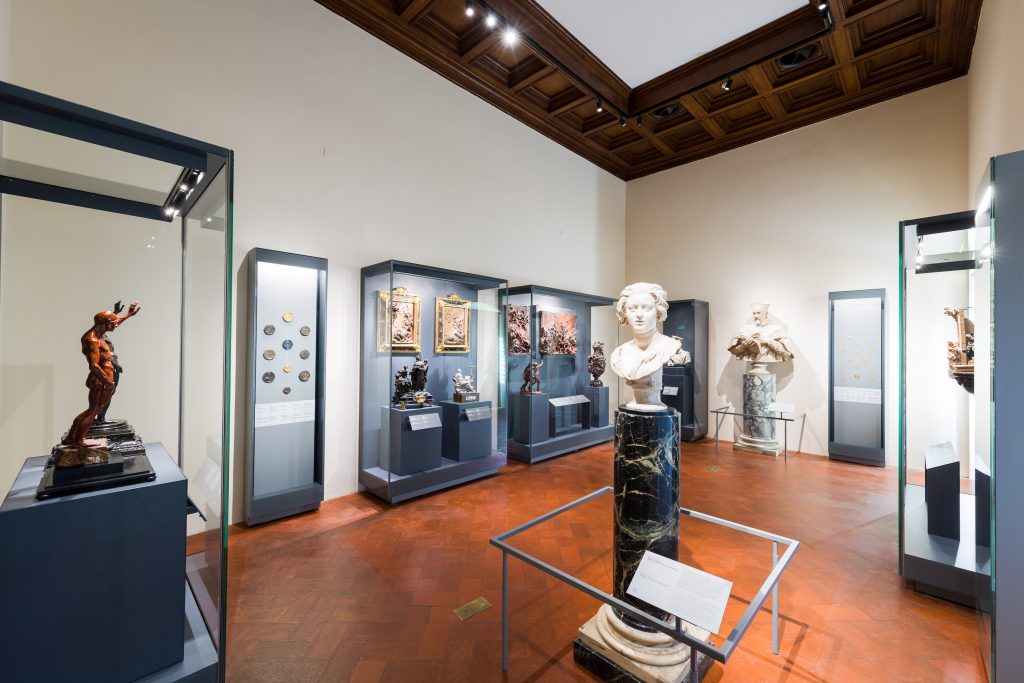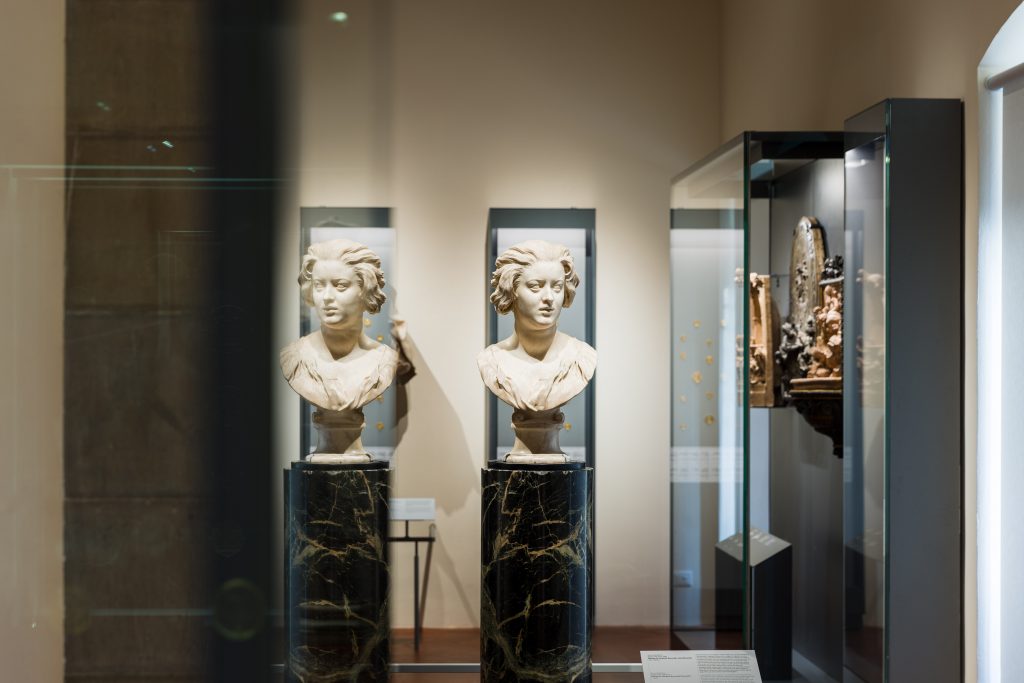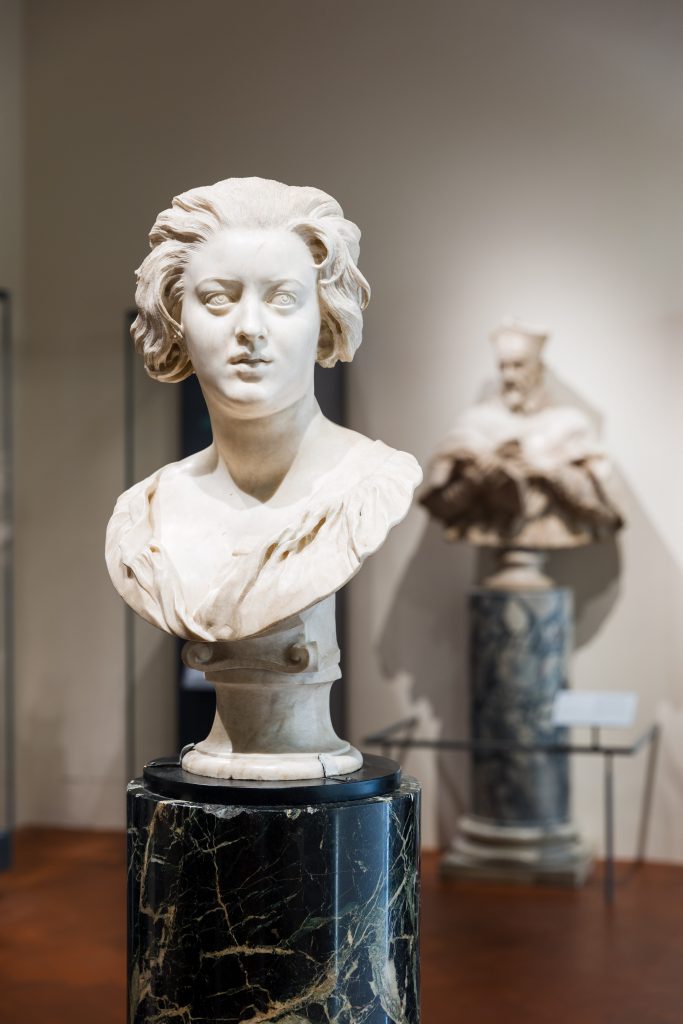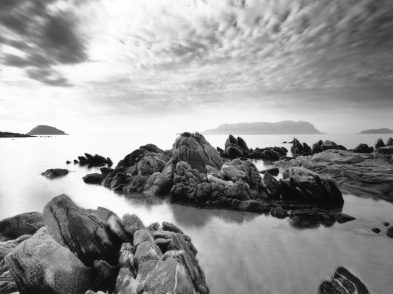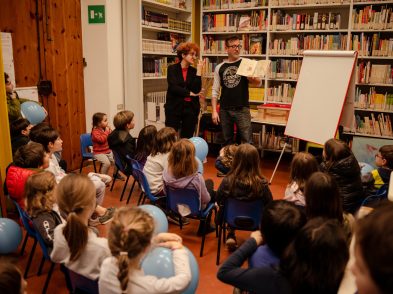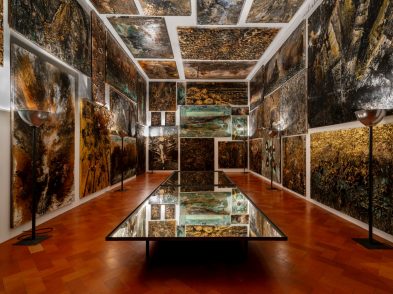The Bargello National Museum inaugurates a new layout on the second floor of the museum, spotlighting the Lorraine Medici medal collection and with baroque sculptures showcased such as Bernini’s bust of Costanza Bonarelli.
On show is a selection of around 240 medals, 22 coins, and a rare stamp from the historic Medici-Lorraine medal collection. Housing examples from the 15th-19th centuries, the entire collection reaches over 10,000 pieces, making it one of the most valuable collections in the world. From papal medals to portraits of writers and artists, the works provide visitors with a thorough itinerary through medal production techniques.
The space dedicated to Florentine Baroque sculpture expands in dialogue with their Roman counterparts, some of which are visible to the public after decades. Noted bronze reliefs by Massimiliano Soldani Benzi and small bronzes by Giuseppe Piamonitni are on show alongside wax models recently donated to the museum by the Marquis Lionardo Lorenzo Ginori Lisci.
The highlight of the room is undoubtedly Gian Lorenzo Bernini’s marble bust of Costanza Bonarelli. It was situated in Bernini’s studio for a long time before most likely being donated by the sculptor to Cardinal Giovan Carlo de’ Medici in 1645 which led to it being exhibited in the Uffizi Statue Gallery before being transferred to the Bargello in 1873. The Sienese noblewoman and merchant was Bernini’s lover and was disfigured on Bernini’s orders the day after the discovery of her relationship with the sculptor’s brother. Director of the Bargello Museums Paola D’Agostino spoke on the subject’s very present significance, “I dedicate the rearrangement, with the bust of Costanza Bonarelli, to the women who have suffered and suffer violence every day…Hers is a sad story but also a story of great redemption…thanks to her strength, she lived a long and intense life: she was an art dealer, a successful woman, and she had an excellent relationship with the papal court”.
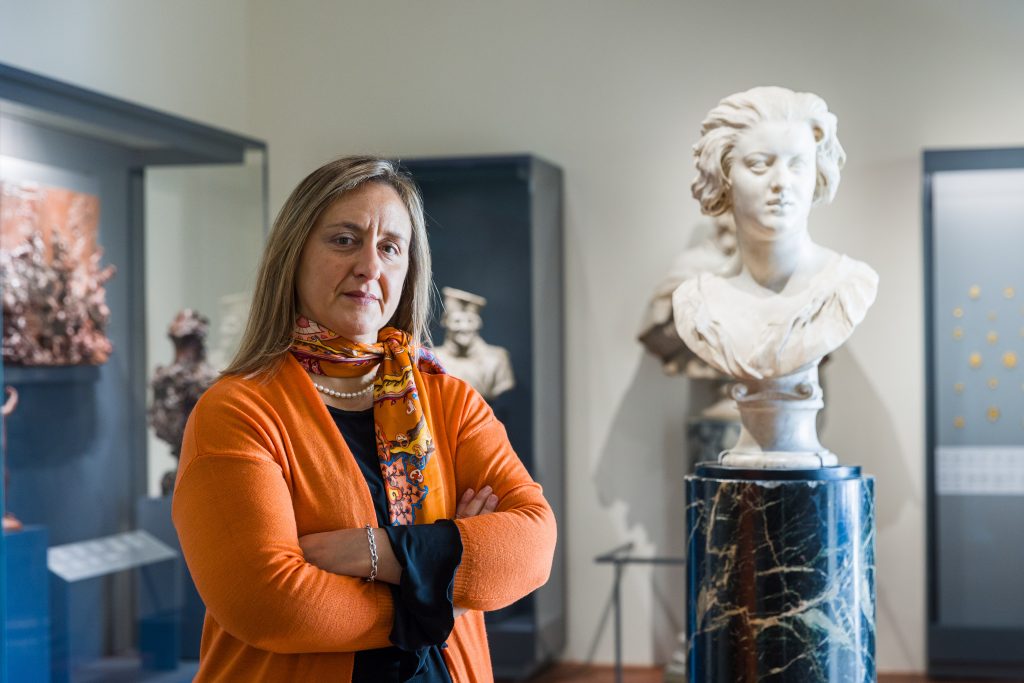
“I am very pleased that this project, on which we have worked for almost five years, has reached completion in 2023…it’s [now] possible to better communicate to visitors the value of the medals, a true promotional tool and social communication method of the time. The new room dedicated to Florentine baroque sculpture of the Medici court illustrates the developments of Tuscan sculpture following the death of Giambologna and the intense relationship that Tuscan sculptors, also thanks to the central role of Cosimo III dei Medici, had with the Roman Baroque”.
The two rooms were included in the museum itinerary as early as 1932, but the spaces have been closed to the public for many decades. The project for a newly designed space began in 2018, with temporary interruptions caused by the pandemic and funding allocations to other projects in the museum. New lighting and modern sliding doors have been installed in order to maintain a constant temperature. In the Sala del Medagliere, the Bargello technical group and the architect Magazzini worked closely with the Scuola Normale Superiore of Pisa, with the selection carried out by Professor Lucia Simonato. 35% of the works on show were not present in the previous exhibition.
Luke Syson, director of the Fitzwilliam Museum in Cambridge, elaborates, “It could be understood, without fear of contradiction, that baroque sculpture is aimed first at the emotions and then at the intellect. At the center of the new room dedicated to Baroque art in the Bargello National Museum lies Bernini’s most personal work, an object around which lustful, murderous, generative, destructive and creative emotions swirl. In this context, the portrait of Costanza Bonarelli appears stronger, more tender, more vulnerable and more beautiful than ever”.

